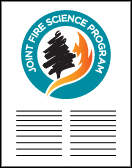United States Joint Fire Science Program
Document Type
Article
Date of this Version
2009
Citation
Project Active ID: 06-2-1-59
Abstract
Coast redwood forests rank among the most significant natural features of North America, yet our understanding of how they came to be and how we might sustain them has been beset by scientific and management uncertainty for decades. A key part of this controversy has been the historical importance of fire given the mild coastal climate and small number of lightning ignitions. In the northern part of the coast redwood range, past research found that fire was uncommon, but results conflicted with others that found fire to be as frequent as in any dry forest of western North America. We established tree-ring based fire histories from across the northern coast redwood range to redress this conflict. We found that methodological shortcomings were responsible for the long fire intervals obtained in other studies, and that fire had burned with high frequency in the majority of sites examined during recent centuries. This discovery is supported by converging evidence from the pattern of basal fire cavities across the landscape. We use ethnographic and archaeological data to explain why this pattern of historical fire from scars and cavities deviates from what is expected from latitudinal and coast-to- interior climate gradients. We describe the extraordinary productivity of fuels in this forest type using an extensive array of fuels transects. While results show that these forests are not limited by fuels, fire in coast redwood is conditionally limited by ignitions and fire weather. Insights from this research help inform where prescribed fire can be used to balance the competing objectives of sustaining forest diversity that often results from fire and minimizing the loss of ancient coast redwood trees that often die because of fire.
Included in
Forest Biology Commons, Forest Management Commons, Natural Resources and Conservation Commons, Natural Resources Management and Policy Commons, Other Environmental Sciences Commons, Other Forestry and Forest Sciences Commons, Sustainability Commons, Wood Science and Pulp, Paper Technology Commons



Comments
U.S. Government Work